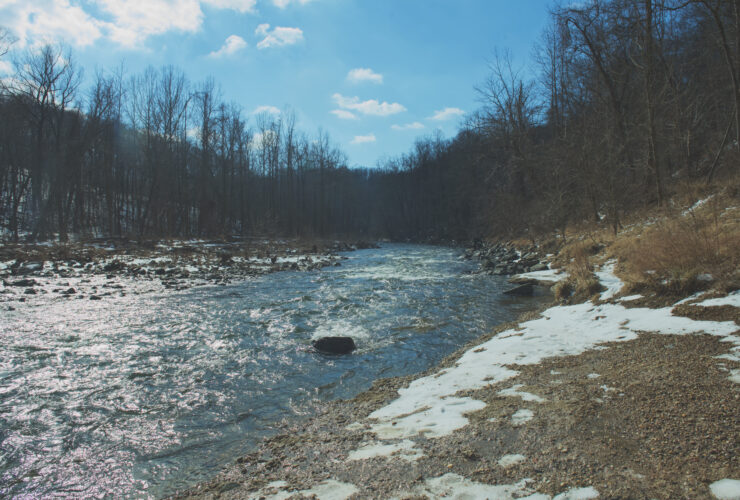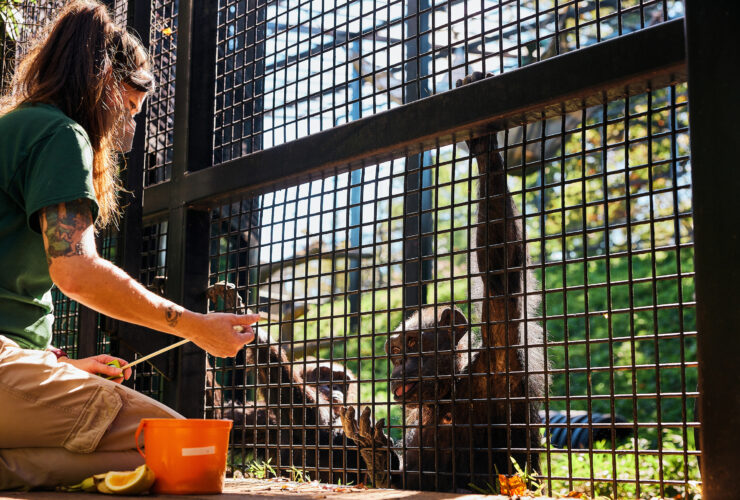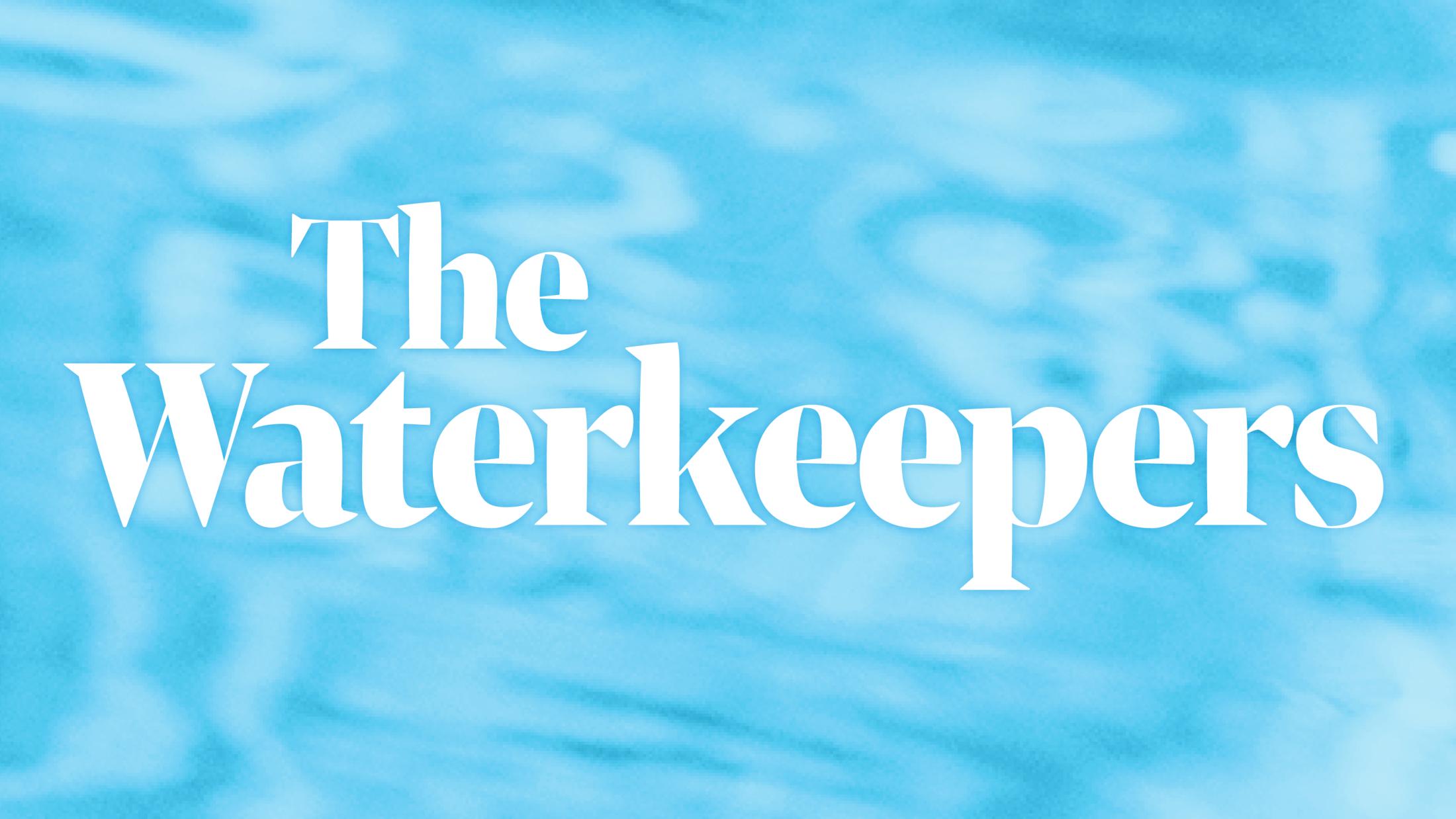
Alice Volpitta and Theaux Le Gardeur keep a close watch on the health of our waterways.
By Emily Gaines Buchler
Photography by Mike Morgan
Alice Volpitta spent her childhood catching tadpoles and skipping stones in Gunpowder Falls, the freshwater river running through a steep ravine in her hometown, Monkton, in northern Baltimore County. The rat-tat-tatting of woodpeckers echoed in the dense hemlock forest, while the rolling hills were lush with blue and gold wildflowers
Years later, Volpitta’s upbringing on the river compelled her to devote her life to cleaning up the waterways flowing south into the Patapsco River.
Today, she serves as the Baltimore Harbor waterkeeper with the nonprofit Blue Water Baltimore, an organization founded in 2010 with a mission to restore the health of the city’s rivers, streams, and harbor, “plagued for decades by trash, toxins, polluted stormwater, and sewage runoff,” Volpitta explains.
Volpitta’s status as waterkeeper makes her one of roughly 300 waterkeepers (or riverkeepers, they’re sometimes called) worldwide. Licensed through the nonprofit organization Waterkeeper Alliance, Volpitta is part of a grassroots movement dedicated to defending the human right to safe drinking, fishing, and swimming water around the globe.
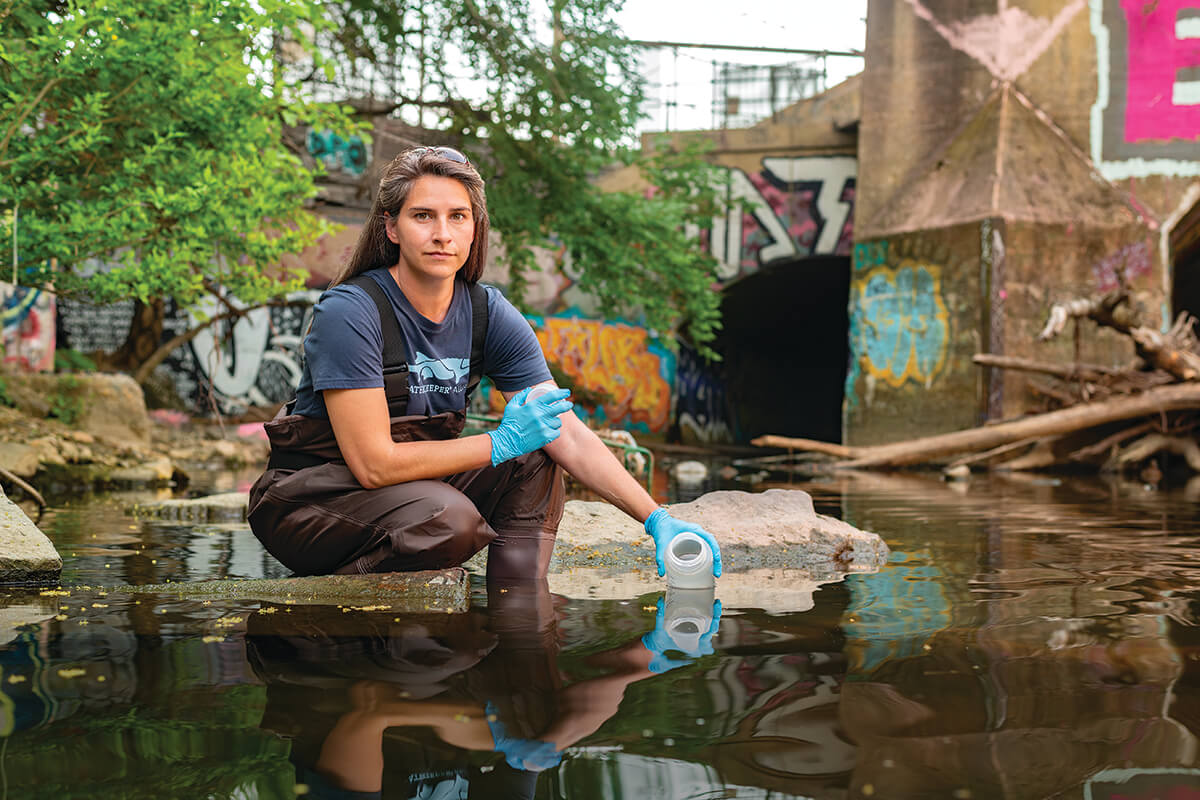
The movement started in the 1960s along the Hudson River in New York, where fishermen noticed industrial contaminants killing fish they had long relied on as food. Years of activism led to legislation to restore the river—and to other groups uniting in the fight for clean water by forming the Waterkeeper Alliance in 1983.
As Baltimore Harbor waterkeeper, Volpitta harnesses skills learned as a biology and environmental science major at St. Mary’s College to test water at 49 spots across the city.
“My title is a misnomer because I monitor the Gwynns Falls, the Jones Falls—the entire tidal and nontidal tributaries that flow into the harbor and Patapsco River, and my jurisdiction includes the entire Back River watershed,” Volpitta says.
She posts test results on an interactive map on Blue Water Baltimore’s website, where the color red reveals a failure to meet state-mandated water quality standards and green signifies a pass.
At the time of this writing, clusters of red decorate the map along the Gwynns Falls and waters off of Canton Park and Locust Point, while greens garnish the upper Jones Falls and most of the Baltimore Harbor. Volpitta attributes the hard-earned greens to fewer sewage overflows upstream and an increased tree canopy and vegetative buffer along the streams, which mitigate polluted stormwater runoff.
Weather also influences water quality in urban environments, with rainfall often leading to higher bacteria readings throughout the watershed. But the reds and greens can change in a day, and no site id pollution-free.
“Our waterways are teeming with life, but they’re sick and need our help,” Volpitta says. “The problems are many: chlorides caused by over-salting roads, a legacy of factories using our waterways as dumping grounds, a crumbling sewage infrastructure, and lack of proper stormwater drainage—all of this spells trouble.”
Pathogens from sewage overflows carry one of the biggest public health concerns. From mild cases of diarrhea to life-threatening conditions like cholera and dysentery, potential illnesses from sewer water make contaminated water unsafe to swim in or touch.
To combat this, Volpitta holds community meetings and events to generate awareness. “The last thing I want to do is tell people not to come in contact with water, but the community deserves to know,” she says.
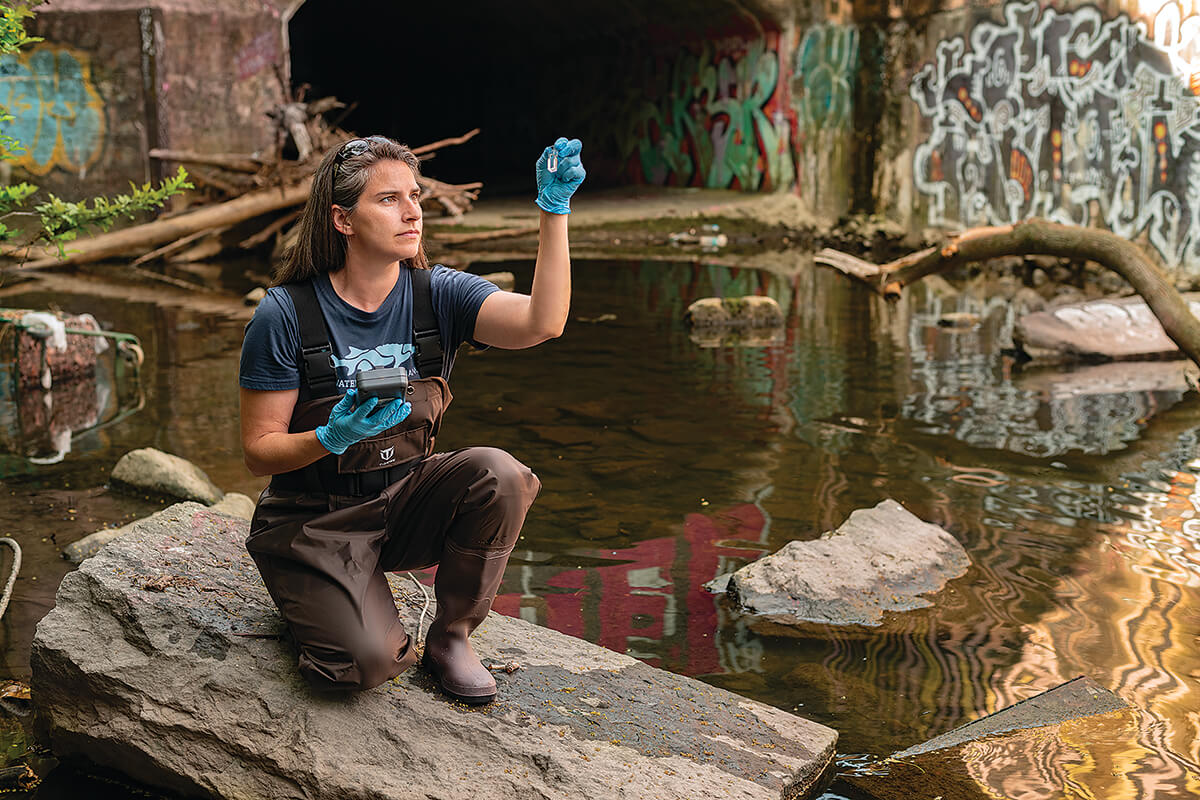
“Our waterways are teeming with life, but they’re sick and need our help.”
While Volpitta keeps an eye on the harbor, her colleague Theaux Le Gardeur keeps his sights on Baltimore’s watershed areas, including waterways that supply the city’s drinking water.
Waterkeepers like Volpitta and Le Gardeur spend as much time monitoring contamination levels as they do advocating for clean water and holding polluters accountable.
“Our responsibility as waterkeepers is to enforce the Clean Water Act passed in 1972 by the Nixon administration,” explains Le Gardeur, who is riverkeeper of the Bush and nearby Gunpowder River and their watersheds, which include the Prettyboy and Loch Raven Reservoirs that supply drinking water to the 1.5 million residents in and around Baltimore.
“People think we work for a state or federal agency, but we do the opposite: We make sure government agencies and all others— small businesses, big businesses, even people out on the water having fun—follow laws that protect water and ultimately the communities.”
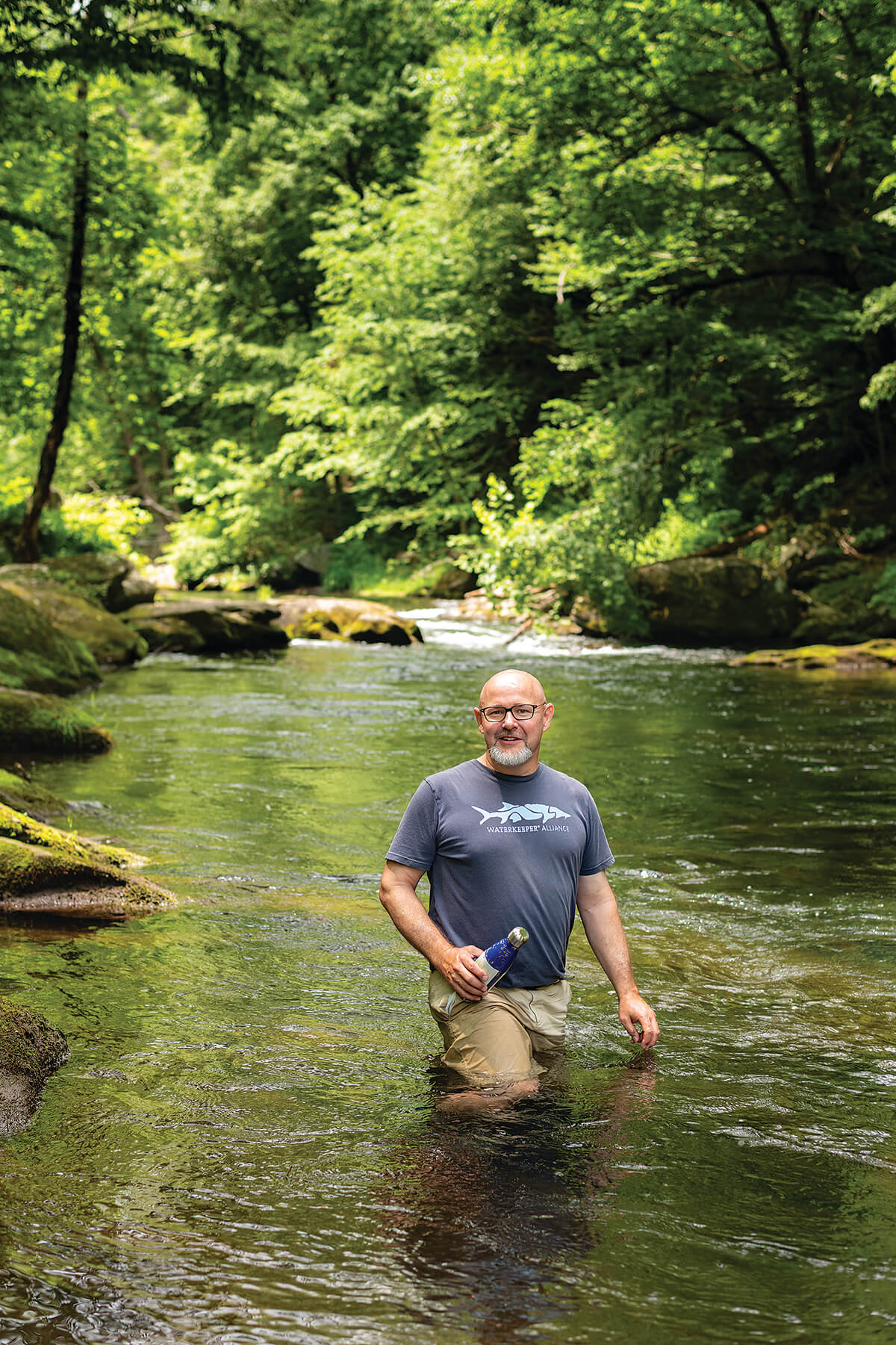
“Clean water
benefits everyone
involved, and
resolutions like
this are a win-win
for us all.”
Like Volpitta, Le Gardeur grew up frolicking in the playground of the great outdoors. Originally from Covington, Louisiana, Le Gardeur vacationed as a child with his parents in North Carolina’s Appalachian Mountains, learning to fly fish on the Cullasaja River, brimming with waterfalls—and trout.
His passion for fly fishing brought him to Volpitta’s hometown, Monkton, where he now operates a fly-fishing shop, Backwater Anglers, and is the executive director of the nonprofit Gunpowder RIVERKEEPER® (GRK).
On top of running the store and leading fly-fishing expeditions, Le Gardeur patrols waterways in his canoes and skiffs and works with pro bono attorneys to craft legal arguments against violations of the Clean Water Act.
In 2020, for instance, GRK issued an intent to sue the United States Environmental Protection Agency (EPA), arguing that the EPA failed to enforce the Maryland Department of the Environment’s timely cleanup of polychlorinated biphenyls, a toxic chemical banned in 1979, in parts of the Gunpowder and Bird Rivers, which flow into the Chesapeake Bay.
In another case, Le Gardeur argued against a permit allowing a wastewater treatment plant in Carroll County to discharge water into a stream flowing into Baltimore County’s Western Run that would eventually end up in the Loch Raven Reservoir. Le Gardeur dropped the lawsuit after two years of deliberation in exchange for the plant adhering to tighter testing and transparency in reporting—a precedent that changed the public notice requirement for more than 150 similarly sized wastewater plants statewide. The plant also agreed to contribute $20,000 to GRK’s work to promote clean water.
“Clean water benefits everyone involved, and resolutions like this are a win-win for us all,” Le Gardeur says.


